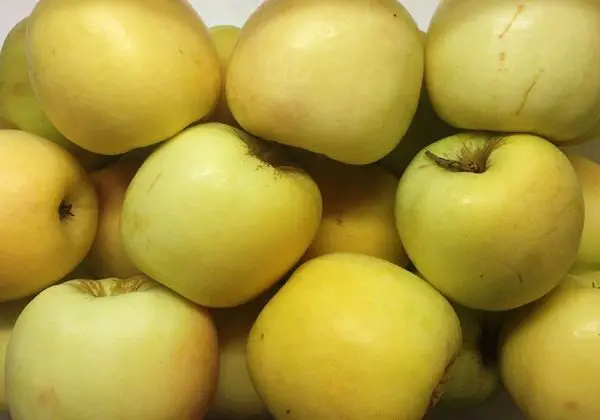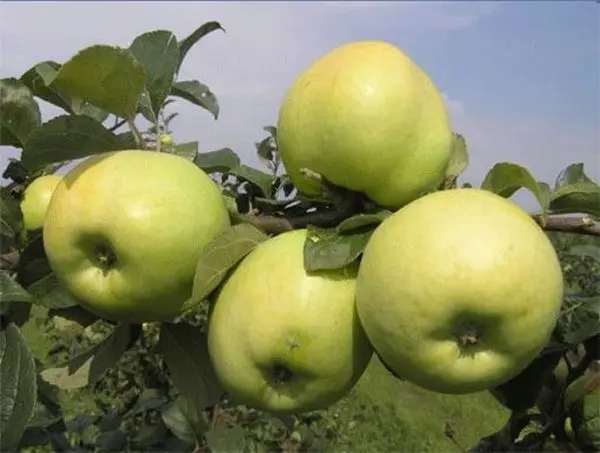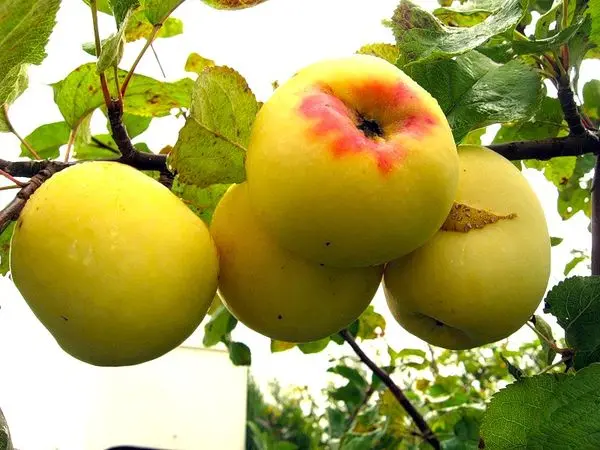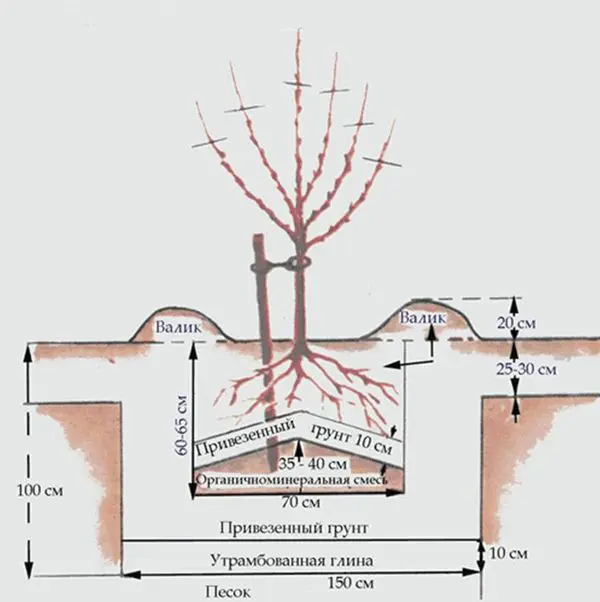Contents
What is a garden without apples. One of the leading varieties is the Antonovka apple tree. To be more precise, this is not a variety, but a variety type with excellent taste and pleasant aroma.
How did the variety originate?

Antonovka is called the Central variety of apples. It is believed that it appeared in the Kursk province in the XNUMXth century as a spontaneous hybrid of a cultivated and wild apple tree. The variety was first described by N. I. Krasnoglazov. Antonovka began to be considered a variety type, since it combines several varieties that are related to each other.
On the basis of this apple tree, breeders bred popular varieties: Antonovka sweet, Antonovka one and a half pounds and white. Also, breeders actively crossed it with other apple trees and received many varietal variations.
Video “Tips for caring for the Antonovka apple tree”
In this video, the expert will tell you how to care for the popular Antonovka apple variety.
Varieties
Ordinary

If we are talking about Antonovka ordinary, then many varieties can be included here: Kursk, simple, glass, waxy yellow, wind, Krasnoglazovskaya. The tree is tall and has a slightly elongated, upward-looking crown. The flowers are white, rather large fruits with light and sweet flesh with a sour taste.
Gold

Antonovka gold is one of the new varieties that ripens in late summer. The tree is taller than average and has a spreading crown. Harvest can be harvested at the end of August and until mid-September. The culture is winter-hardy, the fruits appear five years after planting. The apple tree is immune to scab.
The fruits do not lie for a long time and do not have a pronounced aroma. Straw-yellow fruits are of medium size, although quite large ones are also found. The taste of the fruit is sweet with a slight sourness. Apples have very juicy flesh.
Dessert

The dessert variety was created by S. I. Isaev when crossing Antonovka ordinary and Pepin saffron, he calls it mid-winter. The height of the tree is medium, the crown is spherical. On the branches are slightly wrinkled leaves of rich green color with denticles along the edges.
When the apple tree blooms, it is covered with large pale pink flowers. Fruits of light green color with a ruddy red barrel weigh about 200 g, have a sweet taste with a slight sourness, fragrant aroma. A minimum of 40 kg is collected from one tree. With good care, the harvest can reach 120 kg.
Compared to Antonovka vulgaris, these apples are larger and sweeter. As for winter hardiness, this variety will be weaker. The tree begins to bear fruit three years after planting. If you plan to plant several apple trees of this variety in your garden, then the distance between them should be about 6 m, since the tree loves space.
Main characteristics
Tree height and crown diameter
The fruit tree has a height of 6–10 m. The skeletal branches first rise up and then grow to the sides, forming an oval crown, which becomes spherical as it ages. It is during this period, when the shoots grow, that the tree begins to bear fruit. Antonovka’s bark is brown.
The leaves are bright green at the base, round, turning into oval. The edges of the leaves are serrated. Petioles are short, stipules are rather large. The leaves are attached to the branches at an angle of 90 °. In spring, large, snow-white, sometimes with a pinkish tint, saucer-shaped flowers appear on the branches with petals tightly adjacent to each other.
Pollinators

Apple trees of other varieties can act as pollinators. If you plant Anis, Welsey, Pepin saffron apple trees together with Antonovka in the garden, then the yield of Antonovka will be much higher.
Fruiting and fruit size
As for the description of the fruits: apples are large, round, yellow-green in color, a golden hue appears during storage. The skin of apples is smooth. The fruits are ribbed in the lower part, the calyx is closed, the subcalyx tube has the shape of an inverted cone. The taste of apples is sweet and sour, juicy, with a pronounced smell. Fruits, depending on the variety, can be medium in size and large.
The variety is considered early winter and brings large yields. The fruits sit tightly on the branches and do not crumble. In the twentieth of September, they begin to harvest. Like all winter varieties, apples lie for 3-4 months and become tastier and tastier every day. The fruits are very useful. They contain pectin, ascorbic acid, tannins and other useful elements.
Apples make excellent compotes, jams, juices. And what delicious fruits are obtained if they are salted in a barrel, and even with cabbage – you just lick your fingers! And in winter, such pickles are a source of vitamin C.
Winter hardiness and disease resistance
Antonovka is a winter-hardy variety. But as for the young, for the winter it needs to be mulched with horse humus. With good care, the fruit crop has a high immunity to diseases.
Growing rules

Antonovka not only looks beautiful (as in the photo), it is also easy to grow.
You can plant a tree in the garden in spring, as well as in autumn. In the first case, this must be done before the buds open on the tree, and in the second, a couple of months before the onset of cold weather. It is best to plant a fruit crop in the fall, but here you need to pay attention to the type of soil. If it is black soil, then the conditions will be optimal, if any other type, then it is better to postpone planting until spring.
The place must be sunny, otherwise the fruits will be less sweet, and the yield will be lower. The soil should be moist, but there should be no stagnant water. In this case, the gardener should consider a drainage system. As for the groundwater level, it should be within 2–2,5 m from the surface. The soil should not have a high level of acidity and have a high aeration coefficient. Lime can be added to acidic soil. The best option for apple trees is loamy and sandy soils.
Have you decided to plant a crop in the spring? Then the soil should be prepared in the fall. The site should be dug up and fertilized. Planting holes need to be prepared in autumn. The size depends on the size of the roots and the composition of the soil. On depleted lands, you will still need to add a substrate that will help the plant develop for the first few years. When digging a hole, put the top layer in one direction, and the bottom layer in the other. Usually the top one is more fertile, and it is this one that should be used for planting Antonovka.
Seedlings should be carefully examined, check if they are frozen. To do this, cut the seedling. If the fabric is brown or yellow, then the seedling is frozen, and it can be planted only after pruning the roots to frost-damaged tissues. If you find that the root system has dried up, then the seedling should be soaked for a couple of days in water. Special preparations to stimulate growth can accelerate the growth of roots.
When preparing holes, the distance between the trees should be 3–4 m, and the row spacing should be 5–6 m. Pour the substrate into the prepared hole and drive in the pegs. Loosen the nutrient mixture and pour it near the peg, and place fertile unfertilized soil on top. During planting, pour the same substrate under the roots.
The seedling is placed in a hole so that the root collar rises 10 cm above the surface. Fill in the roots, compact the ground with your foot, make a roller along the border of the pit and pour water into the hole in the amount of two buckets per apple tree.
During the first 7 years, you need to weed every time after watering. In spring and autumn, digging up the soil in the near-stem circle, fertilizer should be applied and mulched with sawdust.
Fertilizers are applied 3 times a year:
- after the snow has melted;
- before flowering;
- before fruit appears.
Chlorophos is used to protect against codling moth. The first time pruning is carried out in the second year, and then the procedure is repeated regularly. Seedlings on a dwarf rootstock are short and easy to prune.
For the winter, the trees are spudded and mulched, the trunk is tied with burlap. A mesh or spruce branches will protect against mice.










